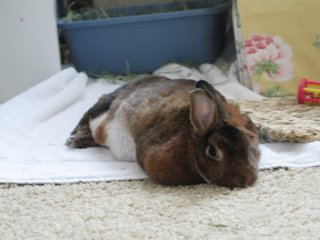
Whenever I push it, my knees complain one way or the other. I saw a physical therapist way back when to get diagnosed. Turns out, I'm slightly knock-kneed and have weak hip abductors. This time around, my left knee is showing all the signs and symptoms of IT band syndrome.
However, when inflamed, the iliotibial band does not glide easily, and pain associated with movement is the result. "
"What Are the Symptoms of Iliotibial Band Syndrome and How Is It Diagnosed? A person with this syndrome feels an ache or burning sensation at the side of the knee during activity. Pain may be localized at the side of the knee or radiate up the side of the thigh. A person may also feel a snap when the knee is bent and then straightened. Swelling is usually absent and knee motion is normal."
"Causes: Anything that causes the leg to bend inwards, stretching the ITB against the femur overpronation (feet rotate too far inward on impact) tightness of the ITB muscle lack of stretching of the ITB incorrect or worn shoes excessive hill running (especially downhills) and running on cambered surfaces overtraining." from http://www.time-to-run.com/injuries/thebig5/itb.htm
Keys:
- IT band runs from hip to knee joint along outer thigh.
- Pain often occurs on outside of knee. It can also occur in the outer hip. Guess what? This is exactly what's happening with me! In addition, pain can be sharp (um, me), and is worse going downhill (me again).
- Causes--think biomechanics here. Wide hips or narrow knees (common in women) are often the cause. Weak quads, tight hamstrings, or weak abductors (outer hip muscles) vs. strong adductors (inner thighs) are also contributers.
And the big question? How to fix it!
- After controlling the initial injury (RICE--rest, ice, compression, and elevation...as well as good ole' Advil), I am trying to get the injury to heal and prevent it from coming back.
- Rest--Unfortunately, it takes time to heal. After a serious strain, it can a minimum of 6 weeks for the tissue to heal. It's important not to push through the pain. Every time I do, I reinjure the tissue and have to start all over. Right now, I'm laying off the running, which is the cause of the pain.
- Test the waters...after the first week, I felt well enough to try and run on the treadmill every so often (2x/week) to reassess. The treadmill offers cushioning the outside road cannot. I can also control the incline and the speed. The second it begins to hurt, I can stop, and I don't have to walk all the way home. Plus, it allows me to see how I'm doing. For instance, last week I couldn't run 5 minutes without it hurting. This week, I can go about 15-20 minutes.
- Cross-train. Perfect for us triathletes. While letting it heal, use it as an opportunity to train your limiters. We never have enough time to train. I'm using this opportunity to log more miles on the trainer and spend more time on swimming. These things don't hurt so I'm cleared for these activities.
- Make sure you have the right running shoe. See a running specialist, physical therapist, orthopedist, or all of the above. Do you pronate? Need orthotics? In my case, I caused the injury by running on concrete in the wrong shoes. Plus, I went too far, too fast. Sigh.
- Find the root of the problem. I saw a great physical therapist who specialized in running injuries back in St. Louis over a year ago when I first encountered my "knee" problem. Now, I know my biomechanics (weak abductors and tight hamstrings).
- Train accordingly. Watch your form when you run and try to engage your glutes and abductors more. Hit the weight room. Well, I'll have to wait and heal first. I really need to strengthen my quads and outer hips. However, I can't do lunges, squats, or leg extensions right now b/c it puts excessive strain on my knee. However, my outer hips and glutes have no excuse. In addition, b/c my hamstrings are tight, and my adductors are dominant, I never, never do strengthening exercises for these muscles.
- Stretch. Focus on IT band and hamstring stretches especially.
- See a massage therapist for a deep tissue massage. Ouch in a good way.
- When it heals, increase training slowly and back off when it begins to hurt, before injuring it.
Unfortunately, I'll always have to watch my knees and hips. However, it's a good indicator. If I'm pushing it too hard, my knees are the first to let me know I need to back off. Plus, I can use the down-time to catch up on other things with life and train in other areas that need it (e.g. swimming!).











